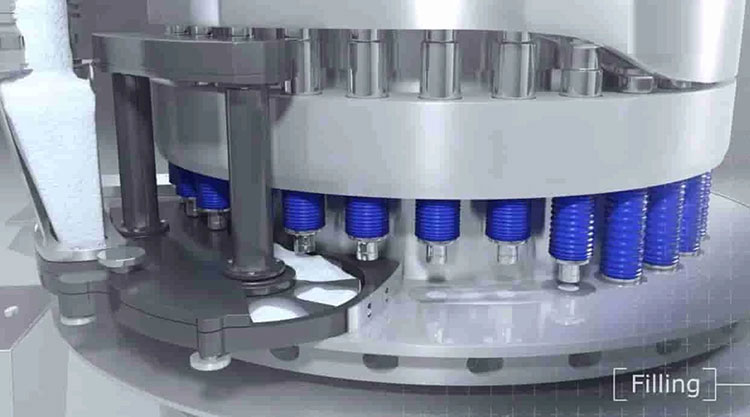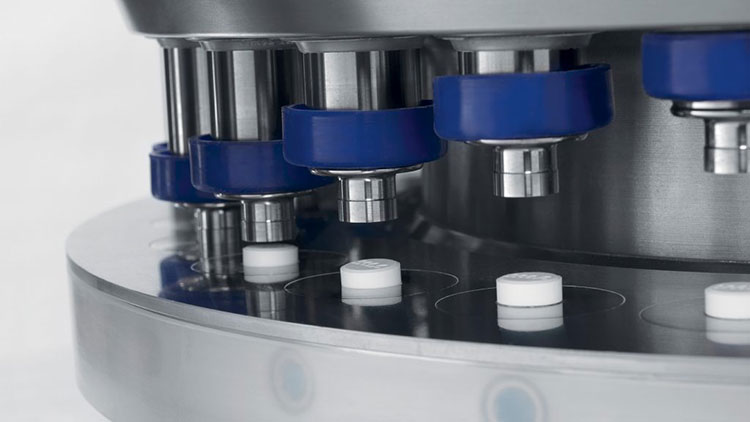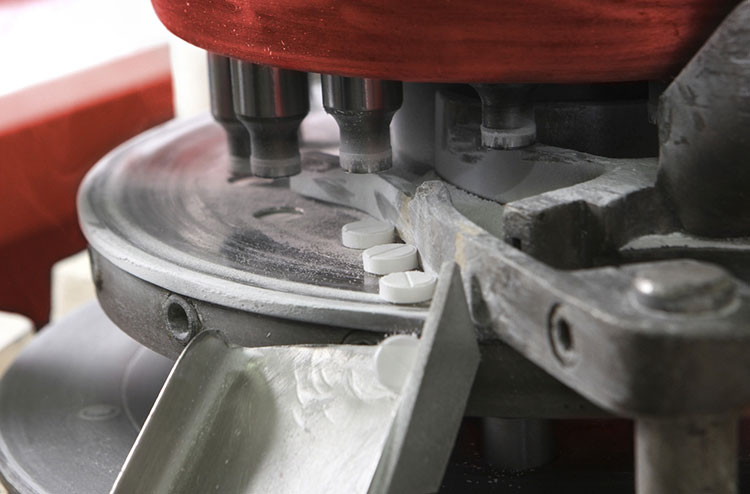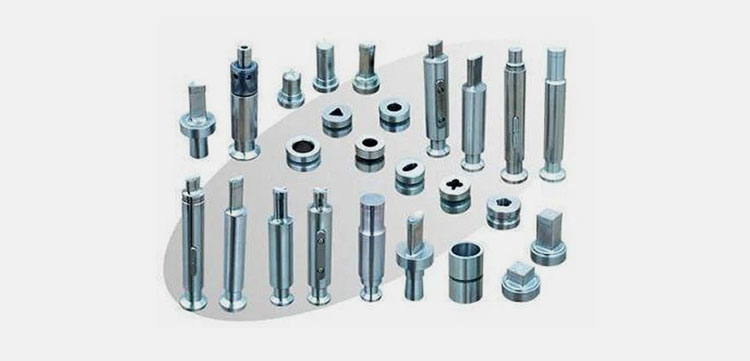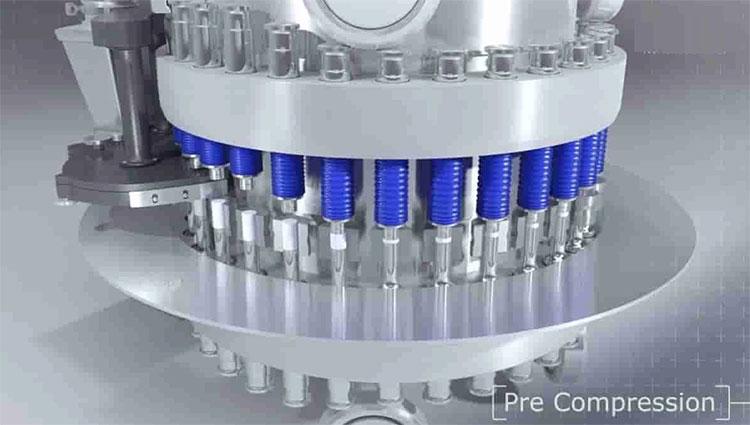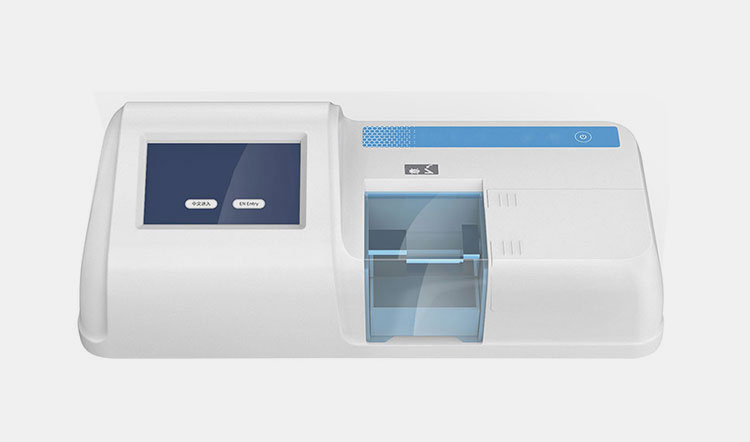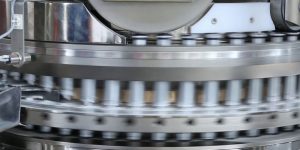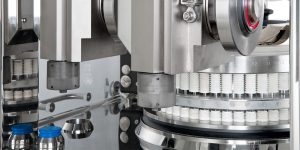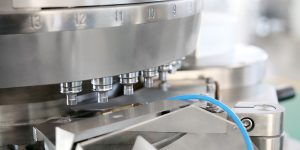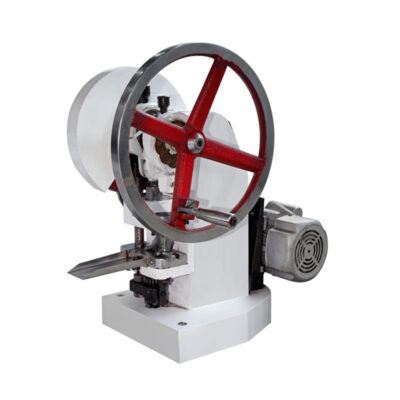What Is Compaction Force in Tablet Compression Machine?
What is compression force? How does it vary with different tablet shapes and sizes? Pharmaceutical manufacturers and pharma research students are often curious about the facets of tablet production. In a tablet production facility, compression is the most crucial step. Tablet hardness as well as its friability is directly correlated with the optimized compaction of powdered blend. Tablet characteristics influence its dissolution and bioavailability.
Tablet compression machines are regarded as the core component of tablet compression. However, you should also focus on creating a perfect powder mixture for compression. Hence, you should strive to learn about the physics and theory behind the compaction procedures to appropriately control the tableting process.
This blog post “What Is Compaction Force in Tablet Compression Machine?” is put together to broaden your intellectual horizons about compaction forces. It will discuss the science behind tableting and the relationship between compaction force and the characteristics of tablets. Now, let’s commence our journey.
1.What is compaction force in tablet compression machine?

Compaction Force In Tablet Compression Machine- Picture Courtesy: BASR Pharma
It is a mechanical force that is solely concerned with compaction of powders or granules in the die cavity of tablet compression machine. With the help of this force powders are transformed into compact and intact tablets. These pills meet the specification of the strength, hardness, and shape with the utility of compression pressure.
The bulk volume of powdery or granular material is reduced in compression and arrange loose powder mixture into cohesive structure by instigating particle arrangement, deformation, and, bonding. Due to compaction force in tablet compression machine particles move in the vicinity of each other and develop strong attractive forces, leading to formation of solid tablet mass.
2.Why is understanding compaction force in tablet compression machine integral for pharmaceutical manufacturing?
Compaction force is responsible for keeping tablets compact and resistant to disintegration. Therefore, it is must to understand the compaction force in tablet compression for attaining quality and potent tablets. Let’s learn about the reasons of learning about compaction force:
Uniform Tablet Quality
Uniform Tablet Quality- Picture Courtesy: SOTAX
Understanding compaction force is pivotal in forming tablets with uniform hardness, weight, and thickness. Thus, you can regulate the intensity of these forces, to ensure that resultant tablets satisfy every predefined criterion of tablet properties. Furthermore, you can exert correct amount of force to prevent problems, for instance, capping, lamination, or breaking during handling, shipment, or packaging.
Proper Dose Accuracy
Proper Dose Accuracy- Picture Courtesy: LFA Tablet Presses
By learning about compaction force, you can estimate proper amount of force used for tableting. This will uniformly distribute active drug components within the tablets. This will lead to proper dosage accuracy without any possibility of over- or under-dosing.
Boosts Tablet Strength
Boosts Tablet Strength- Picture Courtesy: SOTAX
Without proper understanding behind the principle of compaction force, inadequate compaction force will be applied to powders or granules that cause tablets to break apart and fragment, increasing rejection rates. But with adequate force and strong bonding, tablets of high mechanical strength and developed, which can tolerate rigors of handling or shipment.
Cut Down Product Losses
Cut Down Product Losses- Picture Courtesy: Pharma Excipients
Optimized compaction force in tablet compression machine will generate tablets that qualify every quality control test for hardness, dissolution, and friability. This results in distribution of more tablets to packaging stage and reducing wastage of tablets. Moreover, a thorough information of tablet compaction force will decrease downtime due to tablet defects, consequently resulting in efficient tableting cycles.
Aids Research and Development
Aids Research and Development- Picture Courtesy: SOTAX
Comprehending the association between the compaction force in the tablet compression machine and tablet characteristics facilitates the preparation of formulation and powder blends with suitable compressibility and fluidity. Hence, you can tweak the starting materials, granulation approaches, and binder amount depending upon the preferred compaction profile.
3.How is compaction force produced in a tablet compression machine?
You would be intrigued about how compaction force is generated in a tablet compression machine and its specific mechanisms. It is an important force generated by various moving parts in the tablet compression machine. They exert steady pressure to blended materials to turn them into compact tablets.
This compression process utilizes a sophisticated combination of various mechanical and operational controls to accurately regulate the compression force within the die cavity. The mechanisms for production of compaction force in tablet compression machine is mentioned below:
Hydraulic Pressure Mechanism
Hydraulic Pressure Mechanism
In this system, hydraulic pressure mechanism is utilized to apply pressure on the static fluid, which then transmit in all directions. The piston system in hydraulic press is used to apply force on tooling assembly for its movement that generates the compaction force. It comes with advantages of finetuning of pressure to adjust compaction force magnitude.
Cam-Driven Mechanism
Cam-Driven Mechanism- Picture Courtesy: IMA Pharma
It has a rotating cam arrangement that moves punches up and down with its rotation. When materials are transferred to die cavity then usually, the upper punch descends down to exert downward compaction force on the materials, while lower punch holds them in place and usually ascends upward for tablet ejection.
It is used in the high-speed and mass-scale facilities due to its high working speed. Compaction force is modified according to preference by changing the rotational settings of cam.
Screw Mechanism
Screw Mechanism- Picture Courtesy: IMA Pharma
With the aid of motor or other mechanical systems, the screw is rotated. This screw has tiny threads that interact with nuts or other enclosures to induce linear motion of punches. Consequently, the compaction force is created in the tooling assembly and presses the feed against immobile die or opposing punch. This system produces considerable compaction force to make high-density tablets.
4.How is compaction force measured in a tablet compression machine?
Estimating the amount of compaction force in tablet compression machine is crucial aspect of the tableting process and with this you can ensure that formed tablets align with highest standard of quality and meet the regulatory specification. How can you measure this force?
We are detailing different approaches to measure compaction force for your knowledge:
Load Cells
Load Cells
They are the tiny transducers, furbished on the compression rollers, punches or main frame of the tablet compression machine. They can estimate the amount of compaction force by converting it into mechanical signal. Typically, with application of the compaction force, a deformity or change in shape of load cell occurs. This leads to alteration in electrical resistance of load cells and is changed into quantifiable signal. This signal is measured by load cell that offers information on compaction of materials in real-time.
Stain Gauges
Stain Gauges- Picture Courtesy: Federal Equipment Company
They are narrow strips of conductive substances that modify electrical resistance when are elongated or tamped. They are present on the parts, for instance, punches or bearing. It spots deformation in the punches or other components during material compact and offers indirect measurement of exerted compaction force.
Pressure Sensors
Pressure Sensors- Picture Courtresy: Nutrition Group
Sometimes, the devices for measuring the compaction force in tablet compression machine are embedded in the hydraulic mechanism or pneumatic system. Pressure sensors are employed for determining the pressure of the hydraulic fluid. This pressure is equal to amount of compaction force applied on punches.
Torque Sensors
Torque Sensors- Picture Courtesy: PSI Software
As the name indicates, they are employed for measuring the rotational torques on compression rollers. They are found in rotary tablet press and estimate the degree of force transferred through rollers. It offers indirect estimate of the compaction force.
Displacement Sensors
Displacement Sensors- Picture Courtesy: Fve.International
They infer the compaction force by detecting the displacement motion of punches. They are installed on punches and uses light and electromagnetic induction coil to determine the compaction force.
5.How does punch and die configuration affect compaction force in tablet compression machine?
The punch and die configuration have major part in controlling the compaction force. It governs allocation of pressure, the load of material compressed, and quality of end tablets. Some ways by which punch and die configuration affect compaction force are mentioned below:
Geometry and Size of Punch and Die
Geometry and Size of Punch and Die
Flat-shaped punches are integral in uniform distribution of compaction force across powder bed, whereas, the concave-shaped punches are usually utilized for exerting compaction force around edges or central parts of tablets. They create tablets with embossed pattern or unique shapes.
Die with larger sizes can hold more volume of material, therefore, need substantial force to compact powders. The die with smaller sizes needs less compaction force but face more wear and tear because of excessive stress.
Tapered Die
Tapered Die- Picture Courtesy: YENER KALIP
It has a mildly conical opening to mitigate friction during compression and ejection steps. With this design, you can minimize the needed compaction force and reduced damage on punches.
Punch Tip
Punch Tip- Picture Courtesy: Elizabeth Companies
What is a role of punch tip in production of compaction force? If you need more precise tablet shapes, you can utilize sharp tip punch. It develops stress concentration; thus, higher compaction force is required for tableting. On the other hand, round tip punches are ideal for homogenous distribution of compaction force. Engraved punches utilized for creating tablets with logos or marking need excessive compaction force to force pattern into final tablets.
Tooling Configuration
Tooling Configuration- Picture Courtesy: Elizabeth Companies
B-tooling has smaller physical size, making it prefect for applications that needs low level of compaction force, for instance, manufacturing of smaller-sized tablets. D-tooling has larger size, appropriate for production of larger tablets, therefore, needs more magnitude of compaction force.
6.Is compaction force in tablet compression machine influence tablet hardness and friability?
Hardness and friability of tablets- Picture Courtesy: World Pharma Today
Without a doubt, a compaction force in tablet compression machine has a significant effect on the tablet hardness and its friability. How can this be? Well, let’s look at details of mechanism by which compaction force influence tablet hardness and friability.
Tablet Hardness
It is the characteristics of tablet that indicates its ability to tolerate mechanical strain without cracking, fragmenting, or splitting. If you apply higher compaction force, it will compress the particles more tightly, thereby, boosting the strength of inter-particle bonding. This creates higher tablet hardness. Conversely, decreased compaction force lowers the bonding strength between granules and produces softer tablets.
Keep in mind, do not exert excessive compaction force, as it can create tablet defects, such as capping or lamination and also decrease disintegration rate.
Tablet Friability
It is defined as the measure of tendency of tablets to fragment, chip, or disintegrate when exposed to increased mechanical pressure or adversities of shipment or handling. With higher compaction force, you can have enhanced particle bonding, which decrease friability and therefore, tablets are less likely to crack, fracture, or chip. However, lower compaction force on powders or granules produces weak bonding between particles, increasing tablet friability and dust production.
Compaction force in tablet compression machine must be correctly balanced to acquire ideal proportion of hardness and friability.
7.Does compaction force in single-punch and multi-punch tablet compression machine differ from each other?
Compaction force in single-punch and multi-punch tablet compression machine- Picture Courtesy: Truster-Pharma
Yes, there are some significant differences between compaction fore in single-punch and multi-punch tablet compression machines. As, these machines differ in their engineering and operational mechanism, therefore, compaction force varies in utility dynamics and control in both of these equipment. Some of the differences are discussed below:
| Features | Single-Punch Tablet Compression Machine | Multi-Punch Tablet Compression Machine |
| Force Mechanism | It utilizes single upper punch to compact the powder. Typically, compaction force is exerted vertically on the materials. | There are multi array pf punch (upper and lower) punch to convert powdery or granular feed into tablets. The compaction force is exerted concurrently by both upper and lower punches. |
| Timings | It involves one compaction cycle in one interval; hence, it is simple to adjust and control compaction force in this equipment. | Multiple punches are moving to compress numerous tablets in one compression phase, so, more precise calibration of compaction force is required to attain homogeneity across every tooling unit. |
| Force Uniformity | In single punch tablet compression machine, the uniformity of compaction force is much greater, as there is only one pair of tooling. | There are significant differences in compaction force in multi-punch tablet compression machine because of turret alignment as well as punch damage. |
| Compression Speed | This instrument runs at low speed, thus there is more time for materials to compact materials. There is more time for application of compaction force. | This device runs at higher speed, consequently, there is reduced interval during which compaction force is applied to consolidate particles. |
| Force Adjustment | It is easier to alter the compaction force in this device to obtain optimal results. | It requires automated systems and calibrated sensors to adjust compaction force. |
8.What is the difference between precompression force and compaction force in tablet compression machine?
Precompression of Tablets
Transformation of powdery or granular substances is possible due to both pre-compression force and compaction force in tablet compression machine. They both are integral to tableting process and work together to attain optimal quality tablets. It is a common misconception that they are identical to each other. However, there are some significant differences between these forces due to their magnitude, function, and time. Now, let’s have an insight on their distinct roles:
| Features | Precompression Force | Compaction Force in Tablet Compression Machine |
| Definition | This force is applied to powder or granular mixture beforce the actual compression process. It has lower intensity and its exertion serve as a initial step in the tableting procedure. | It is the main compaction force exerted during the primary compression step to change blended feed into cohesive unit or tablets. |
| Purpose | It has diverse functions, for instance, elimination of entrapped air molecules within the powder bed. It uniformly dispenses starting feed in the die cavity and also has a role in the particle arrangement, which increases the contact areas between particles for optimal bonding during the compression stage. | Its main function is to bond the particles with adequate pressure to form high-tensile strength and undamaged tablets. This compact force is responsible for determining the hardness, porosity, and disintegration profile of tablets. Due to this stronger force, particles are strongly bonded and do not break apart or crumble during logistics and distribution. |
| Intensity | Its magnitude is much smaller than primary compaction force and typically is about 0.1–1 kN (kilonewtons). | Its intensity is much higher than pre-compression force and is about 1–50 kN or more. Its magnitude is typically determined by size, ingredients, and desired strength of end-tablets |
| Timing | It is exerted at the beginning of the compression cycle, prior to movement of the punches under the compression rollers. | When the punches moves under the compression rollers then this force is applied- instantly after the precompression force. |
| Tableting Impact | It is necessary for preparing the starting feed for smooth and flaw-less compression. It starts the compaction process and partially compacts the feed. | It establishes the structural integrity of formed tablets, so that they conform to specified physical and mechanical criteria. |
9.What are quality control instruments for compaction force in tablet compression machine?
There are various quality control instruments that indirectly quantify compaction force in tablet compression machine. Some of these devices are listed below:
Tablet Hardness Tester
Allpack Tablet Hardness Tester
A tablet hardness tester is a specialized device with remarkable features to quantify the hardness of tablets. It indirectly determines the compaction force by estimating the durability of tablets and resistance. The tablet is placed between two corresponding jaws and force is subjected to crush tablets. The force value until its breakage is recorded and gives the estimate of hardness.
The hardness is indicator of compaction force exerted to formulate tablets in manufacturing process.
Tablet Friability Tester
Allpack Tablet Friability Tester
It is utilized to estimate the tendency of tablets to crumple, chip, split, or crack upon strenuous stresses of logistics and supply chain. Tablets are rotated in drum that mimics the strains faced by products during shipment or handling. After run, weight loss is measured to determine friability.
More weight loss means more friability that in turn shows insufficient compaction force to compact materials.
10.What are common challenges to control compaction force in tablet compression machine? How to address them?
How to attain quality and consistency in tablet batches? Simply, by accurately controlling the application of compaction force in tablet compression machine. However, there are wide array of challenges that make this process quite troublesome. However, there is no need to worry because we are describing these challenges and also stating their solutions.
Inconsistent Powder Fluidity
Inconsistent Powder Fluidity- Picture Courtesy: Indpro Engineering Systems
Irregular powder or granule loading into die cavity results in differences in weight and density. This leads in variability in the magnitude of the compaction force.
Solution
You can fix this issue by using flow enhancers, for example, colloidial silica to improve powder flow. Also, you can modify design of hopper or feeder to obtain even flow. It is recommended to use granules with consistent size range to increase fluidity.
Material Characteristics
Modification in Material Properties- Picture Courtesy: Jenike & Johanson
Sometimes, you compress materials that have low compressibility, stick to surface of punches, or have diversity in their particle sizes. This creates a variable compaction force and it is difficult to maintain it at steady level.
Solution
It is a significant challenge encountered by numerous manufacturers; however, it is simple to solve it by incorporating diverse kinds of binders or lubricants to boost the compressibility behavior. Also, you can study your starting feed attribute by carrying out pre-compression test.
Environmental Conditions
Environmental Conditions- Picture Courtesy: I Holland
Are there excessive humidity or temperature fluctuations in your facility? If yes, then it can alter the material traits, for instance, its fluidity or moisture amount. Due to this the compaction profile of materials is altered.
Solution
You must main stable environmental setup by installing air ventilation systems, air conditioners, or dehumidifier to keep physiochemical properties of materials from changing. Also, it is advised to store powder or granular blend in moisture-proof containers.
Granule Segregation
Granule Segregation- Picture Courtesy: Jenike & Johanson
Are your granular matter keep segregating? It could certainly alter the consistent filling of die cavity. This cause irregularities in tablet weight, hardness, as well as compaction force. With segregation of granules in different sizes or density profile, it will be difficult for you to apply controlled steady compaction force on granules.
Solution
This challenge is easily addressed by employing correct blending protocols and adequate blending time. This will result in homogeneity of blending. Moreover, utilize well-establish granulation approaches to form uniform-sized and density granules. Incorporate baffles in hopper to decrease rate of segregation.
Sticking of Powders
Sticking of Powders- Picture Courtesy: Huada Pharma
Do you observe material sticking to punches? It averts the exertion of homogenous pressure and cause application of inconstant compaction force across the die cavity. Furthermore, it enhances buildup of frictional force, hence, more compaction force is needed to compact powders or granules.
Solution
To resolve this problem, you must utilize anti-sticking agents, for instance, magnesium stearate. Secondly, adjust granulation process to attain correct moisture level in granules. Tablet press tooling must be clean and well-maintained to avoid sticking problem.
Conclusion
In conclusion, the compaction force in tablet compression machine is a secret ingredient that transforms a load of powder into solid, functional, and potent tablets. It is not just about compacting the feed- it’s about exerting the prefect balance of compaction force to create strong, hard, and unform tablets that serve their therapeutic purpose. Moreover, using right amount of force, you can avoid tablet brittleness, chipping, cracking, laminating, or, friability. It is a delicate balance of precision, science, a light dash of art. If you need to learn more or in need of tablet compression machine then contact AIPAK to obtain promote response on your queries and orders.
Don't forget to share this post!
Tablet Press Machine Related Posts
Tablet Press Machine Related Products
Tablet Press Machine Related Videos
CONTACT US
Tell us your raw material and project budget to get quotations within 24 hours.
WhatsApp Us: +86 189 7157 0951
Want the best price & newest pharmaceutical machinery buying guide,tips and trends sent straightly to your box?Sign up for AIPAK’s monthly newsletter,we’re free for your consultation and Offer you the most suitable solutions!
The Buyer's Guide
- Capsule Filling Buyer's Guide
- Blister Packaging Buyer's Guide
- Tablet Counting Buyer's Guide
- Tube Filling Buyer's Guide
- Cartoning Buyer's Guide
- Gummy Making Buyer's Guide
- CO2 Extraction Buyer's Guide
- Empty Capsules Buyer's Guide
- Suppository Filling Buyer's Guide
- Tablet Coating Buyer's Guide
- Tablet Press Buyer's Guide
- Softgel Encapsulation Buyer's Guide
Most Popular
- 7 Importance Of Pharmaceutical Packaging In Different Applications You Must Know
- 6 Advantages You Must Know About Tablet Counting Machine
- 8 Advantages of Blister Packaging You Must Know
- 6 Critical Applications of Automatic Capsule Filling Machine
- 6 Stations You must Know to Improve the Filling Quality of Automatic Capsule Filling Machine
 Tell us your material or budget, we'll reply you ASAP within 24 hours
Tell us your material or budget, we'll reply you ASAP within 24 hours






